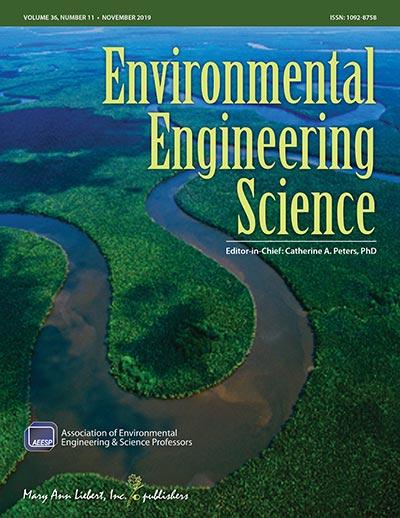
Credit: Mary Ann Liebert, Inc., publishers
New Rochelle, NY, December 2, 2019–In a new study, researchers provide conclusive evidence of a statistical relationship between the incidence rates of invasive cancer in a given area in the U.S. and the amount of precipitation and climate type (which combines the temperature and moisture level in an area). The researchers recommend additional studies to understand how environmental factors such as precipitation and temperature are linked to cancer rates. The current study is published in Environmental Engineering Science, a peer-reviewed journal from Mary Ann Liebert, Inc., publishers. Click here to read the full-text article free on the Environmental Engineering Science website through January 2, 2020.
The article entitled “Precipitation and Climate Zone Explains the Geographical Disparity in the Invasive Cancer Incidence Rates in the United States,” was coauthored by Vishal Shah, Randall Rieger, and Liang Pan, West Chester University of Pennsylvania. The researchers reported that in the United States, counties with high precipitation and cold climate have statistically significantly higher invasive cancer incidence rates. They emphasize that precipitation, moisture, and temperature might not be direct causes of increased cancer rates, but may instead increase exposure to carcinogens by acting as carriers, or increase the generation of naturally occurring carcinogens.
“This is an important study with findings that illustrate for the first time the statistical connection between natural factors and cancer rates in the U.S.,” says Catherine A. Peters, PhD, Editor-in-Chief of Environmental Engineering Science and Professor, Department of Civil & Environmental Engineering, Princeton University.
###
About the Journal
Environmental Engineering Science, the official journal of the Association of Environmental Engineering & Science Professors, is an authoritative peer-reviewed journal published monthly online with open access options. Publishing state-of-the-art studies of innovative solutions to problems in air, water, and land contamination and waste disposal, the Journal features applications of environmental engineering and scientific discoveries, policy issues, environmental economics, and sustainable development including climate change, complex and adaptive systems, contaminant fate and transport, environmental risk assessment and management, green technologies, industrial ecology, environmental policy, and energy and the environment. Tables of content and a sample issue may be viewed on the Environmental Engineering Science website.
About the Association
The Association of Environmental Engineering and Science Professors (AEESP) comprises faculty members in academic programs throughout the world who provide education in the sciences and technologies of environmental protection. The mission of AEESP is to assist its members in the development and dissemination of knowledge in environmental engineering and science. AEESP seeks to strengthen and advance the discipline of environmental science and engineering by providing leadership, promoting cooperation amongst academics and others within and outside the discipline, and serving as a liaison between its membership and other professional societies, governmental agencies, industry and nonprofit organizations.
About the Publisher
Mary Ann Liebert, Inc., publishers is a privately held, fully integrated media company known for establishing authoritative peer-reviewed journals in many promising areas of science and biomedical research, including Industrial Biotechnology, Sustainability: The Journal of Record, and Environmental Justice. Its biotechnology trade magazine, GEN (Genetic Engineering & Biotechnology News), was the first in its field and is today the industry’s most widely read publication worldwide. A complete list of the firm’s 90 journals, newsmagazines, and books is available on the Mary Ann Liebert, Inc., publishers website.
Media Contact
Kathryn Ryan
[email protected]
914-740-2250
Original Source
https:/
Related Journal Article
http://dx.




